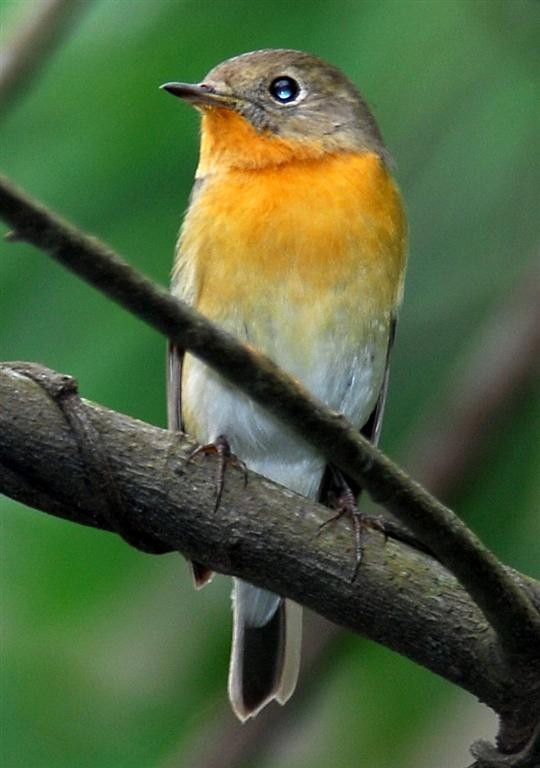Mugimaki Flycatcher
A species of Ficedula Flycatchers Scientific name : Ficedula mugimaki Genus : Ficedula Flycatchers
Mugimaki Flycatcher, A species of Ficedula Flycatchers
Botanical name: Ficedula mugimaki
Genus: Ficedula Flycatchers
Content
Description General Info
Description
The mugimaki flycatcher is 13 to 13.5 centimetres long. It has a rattling call and often flicks its wings and tail. The adult male has blackish upperparts with a short white supercilium behind the eye, a white wing-patch, white edges to the tertials and white at the base of the outer tail-feathers. The breast and throat are orange-red while the belly and undertail-coverts are white. The female is grey-brown above with a pale orange-brown breast and throat. She lacks white in the tail, has one or two pale wingbars rather than a white wing-patch and has a supercilium that is either faint or absent entirely. Young males are similar to the female but have a brighter orange breast, white in the tail and a more obvious supercilium. 
Size
14 cm
Nest Placement
Tree
Feeding Habits
Mugimaki Flycatcher primarily feasts on small invertebrates, supplementing its diet with seeds, fruits, and berries. It engages in agile foraging and adeptly captures insects in flight, displaying a preference for varied prey items that it often hunts during specific feeding times.
Habitat
The mugimaki Flycatcher inhabits diverse woodland environments, commonly favoring lowland and submontane regions. Its habitat ranges from broadleaf evergreen and conifer forests, including moist taiga and riverine spruce forests, to adjoining scrublands and occasionally plantations. During migration, mugimaki Flycatcher can be observed in parks, gardens, coastal woodlands, and scrub. In its non-breeding season, it resides in similar terrains such as secondary woodlands and forests, generally above 800 meters and up to 2000 meters in elevation.
Dite type
Insectivorous
General Info
Feeding Habits
Bird food type
Bird Feeder Type

Platform
Distribution Area
It breeds in eastern Siberia and north-east China. Migrating birds pass through eastern China, Korea and Japan in spring and autumn. The species winters in Southeast Asia, reaching western Indonesia and the Philippines. There is a single record of a vagrant bird in Alaska; on Shemya Island in 1985. A bird in Humberside, England in 1991 was not accepted into Category A, a wild bird, but was put in a Category D, meaning likely to be of captive origin. It was retained in Category D following a review in 2009. After a third review in 2016 the bird was placed in category E. The main habitats are forest and woodland, particularly at higher elevations. It is also found in parks and gardens during migration. It usually occurs alone or in small groups, feeding on flying insects in the tree canopy. 
Species Status
Not globally threatened.
Scientific Classification
Phylum
Chordates Class
Birds Order
Perching birds Family
Old world flycatchers Genus
Ficedula Flycatchers Species
Mugimaki Flycatcher 